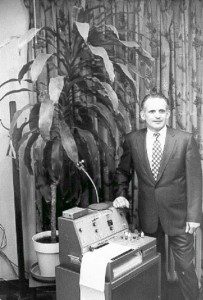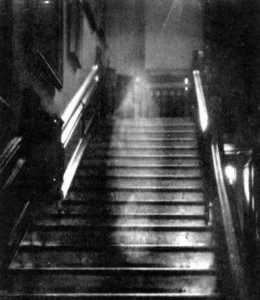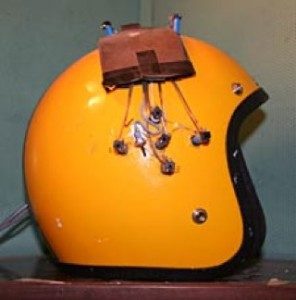
I would venture to say that every adult who might happen across this post has had some experience with lawn mowing. That is to say that most everyone has observed or participated in the act of grass cutting; making it a common practise and experience in most cultures (though I admit this may be an example of 1st world chauvinism).
In any event, none (or at least very few) of those people would ever give a second thought to the potential pain and brutal destruction going on below their feet. A grand act of herbicidal horror, genocide if you will, an act so heinous that, were it perpetrated against a conscious living being the culprit would be subject to the most capital of punishment and societal scorn. But cutting the grass isn’t a crime, it isn’t murder (or aggravated assault?), and anyone who suggests otherwise should be facing the condescension of a psychiatric professional…or should they?

Well, I’ll tell you, there are quite a few people who might say that grass, or any plant for that matter is a feeling, emotional and communicative entity. Known as plant perception or biocommunication, the idea that plants are sentient living beings is gaining support among the metaphysical / paranormal community. And if this sounds strange to you, consider the common notion that plants respond to the human voice, and are nurtured by a daily dialogue. I’m willing to bet there are many of you that talk to your plants on a regular basis.
The idea that plants respond to human interactions was first postulated by Dr. Gustav Theodor Fechner in 1848. Fechner, an experimental psychologist, suggested that plants are capable of emotion and that one could promote healthy growth with talk, attention and affection.[1] This idea remained largely untested until 1900, when Indian scientist Jagadish Chandra Bose found, through experimentation, that all plants have a form of a nervous system and will respond to electric shock by spasm.
Support for this idea took some time to get off the ground though, until Cleve Backster, a CIA interrogation expert of all things, conducted experiments using a polygraph machine to measure bioelectrical responses in many types of plants. Specifically, in February of 1966, Backster measured electrical resistance in the plant’s leaves which would change when the plant was watered. He found that plants “…show a pattern typical of the response you get when you subject a human to emotional stimulation of short duration”.
 As a result of his experiments, the idea that plants have a conscious awareness and capability to communicate with the world around them is now known as the Backster Effect. Several books have been published expounding on the Backster Effect and expanding on the original hypothesis, such as The Secret Life of Plants by Tomkins and Bird.[2] The effect was even tested by the inimitable Mysthbusters (Season 2, Episode 5, 2006), wherein they examined plants using a galvanometer (the main component of a polygraph machine). They subjected plants to several real and imagined dangers, and even potential psychic influence, though they came up empty, finding no statistically relevant results.
As a result of his experiments, the idea that plants have a conscious awareness and capability to communicate with the world around them is now known as the Backster Effect. Several books have been published expounding on the Backster Effect and expanding on the original hypothesis, such as The Secret Life of Plants by Tomkins and Bird.[2] The effect was even tested by the inimitable Mysthbusters (Season 2, Episode 5, 2006), wherein they examined plants using a galvanometer (the main component of a polygraph machine). They subjected plants to several real and imagined dangers, and even potential psychic influence, though they came up empty, finding no statistically relevant results.
It should be known that mainstream science largely views biocommunication and the Backster Effect to be pure pseudoscience (with some exception, which we’ll get to in a minute), dismissing the entire idea because of the fact that plants have no apparent nervous system. But Hollywood has no such compunctions. The popular M. Night Shyamalan movie The Happening, staring Mark Wahlberg and Zooey Deschanel illustrated the dark side of the Backster Effect quite well.

Wahlberg’s dismal acting aside, is it possible that plants, the plants that surround us, from blades of grass to massive haunting forests, are actually plotting our collective demise? After all, we do pretty much everything we can to annoy, afflict and assault them on a daily basis. If they have emotions and the ability to express them, aren’t we due a retaliatory slap in the face about now?
As it turns out, Shyamalan and Wahlberg weren’t far off the mark. In a paper published in the scientific journal Ecology Letters on May 9th 2013, several scientists have found that plants actually do communicate, with each other if not the rest of the world.[3][4] The paper, authored by a team of scientists from the University of Aberdeen, Scotland, the James Hutton Institute and Rothamstead Research, details how plants – they used broad bean plants – use an underground network of fungus called mycorrhizae to signal other nearby plants of impending danger.
In their study, they subjected the plants to simulated attacks by aphids (small insects that feed on many different plants), and they found that through this fungal network, the plants were able to warn the other plants of the attack, giving them time to deploy defensive strategies such as releasing chemical pheromones to discourage the aphids and to attract wasps, the aphid’s natural predators.
 Of course, there are several plant species that are known for their aggressive predatory adaptations, such as the Pitcher Plant and the Venus Fly Trap, but mainstream science tends to ignore these examples of plants that actively interact with their environment. What if all plants are ultimately capable of affecting their environment in more subtle and potentially dangerous ways?
Of course, there are several plant species that are known for their aggressive predatory adaptations, such as the Pitcher Plant and the Venus Fly Trap, but mainstream science tends to ignore these examples of plants that actively interact with their environment. What if all plants are ultimately capable of affecting their environment in more subtle and potentially dangerous ways?
So the next time you’re mindlessly running the lawnmower over the front lawn, or when your mercilessly yanking weeds from your garden, think twice and be prepared to defend yourself against the uprising of the dandelions!
I know many people feel a deep connection to plant life and those people usually aren’t shy about describing their relationships with their garden’s inhabitants. If you’re one of them, I invite you to share your story in the comment section below.
[1] Michael Heidelberger Nature from within: Gustav Theodor Fechner and his psychophysical worldview 2004, ISBN 0-822970775, p. 54
[2] Peter Tomkins & Christopher Bird, The Secret Life of Plants (1973) ISBN 0-06-091587-0
[3] David Ferguson (TheRawStory.com), Plants Use Underground Fungus Network to Send “Distress Signal” to Each Other, http://www.rawstory.com/rs/2013/05/10/plants-use-underground-fungus-network-send-distress-signals-to-each-other/
[4] Ecology Letters (2013): http://onlinelibrary.wiley.com/doi/10.1111/ele.12115/abstract






















 Fortunately for our civilization at the time, electrical appliances weren’t in widespread use, and as a result, only a few telegraph services experienced a temporary disruption. A similar geomagnetic storm today would decimate our technologically dependent culture, rendering all computers, cell phones (and telephones for that matter) and vehicles useless, at least temporarily if not permanently.
Fortunately for our civilization at the time, electrical appliances weren’t in widespread use, and as a result, only a few telegraph services experienced a temporary disruption. A similar geomagnetic storm today would decimate our technologically dependent culture, rendering all computers, cell phones (and telephones for that matter) and vehicles useless, at least temporarily if not permanently.






